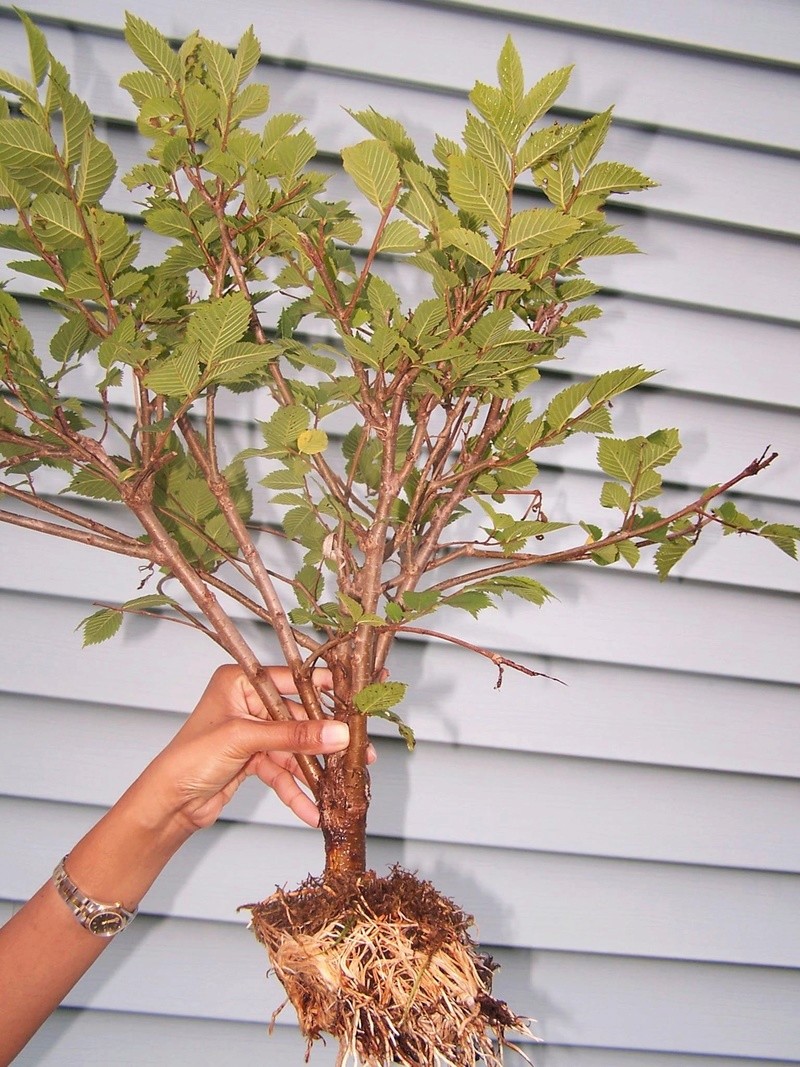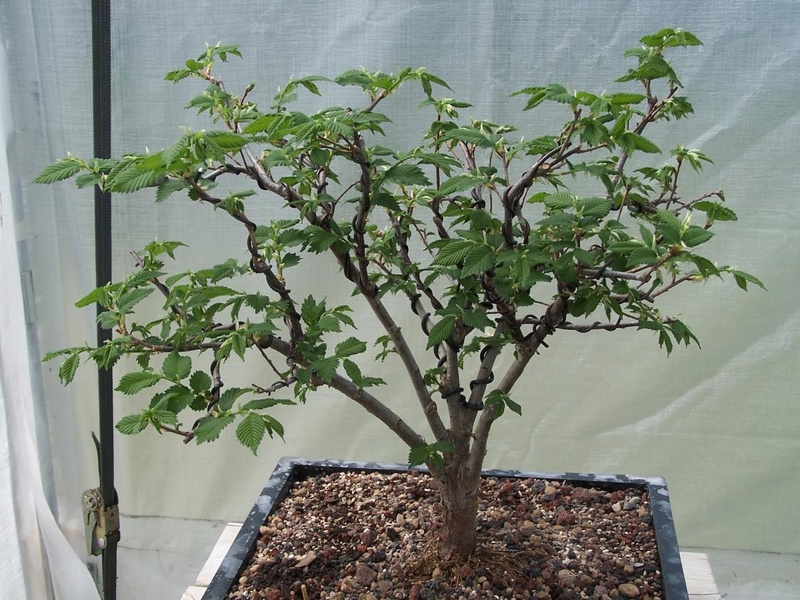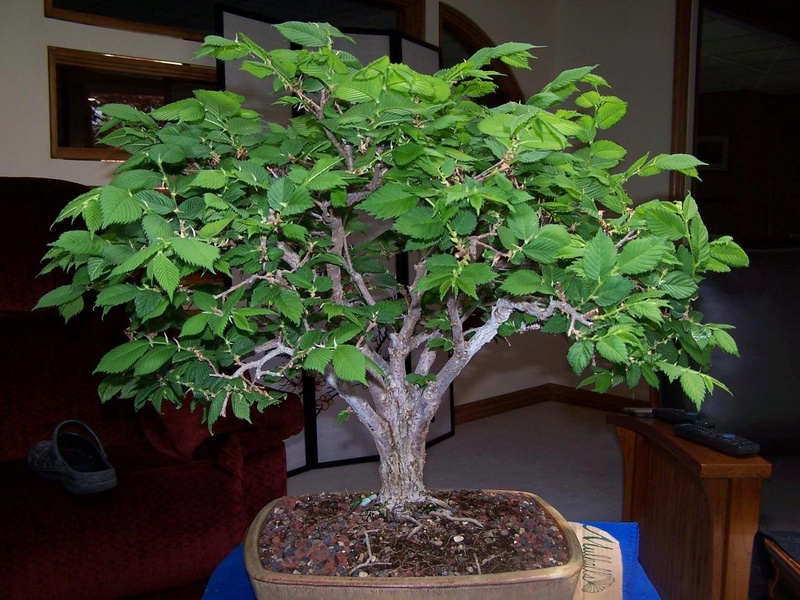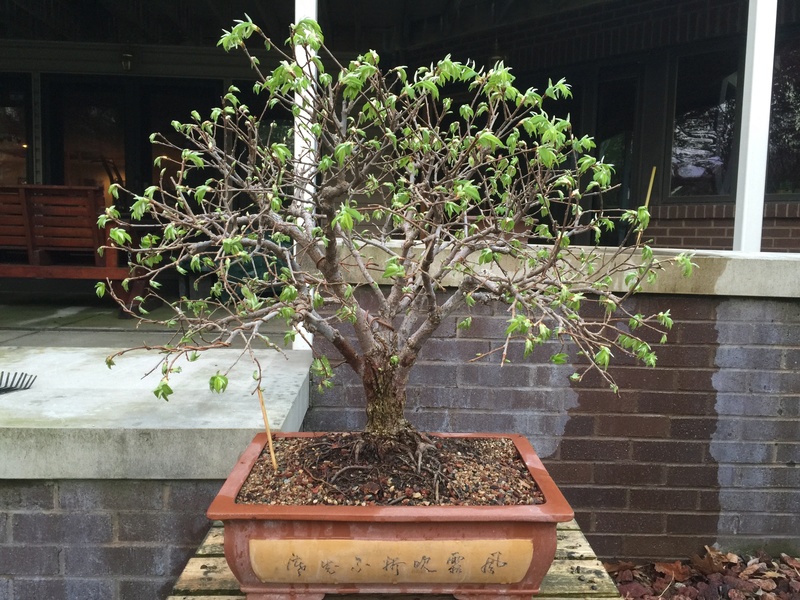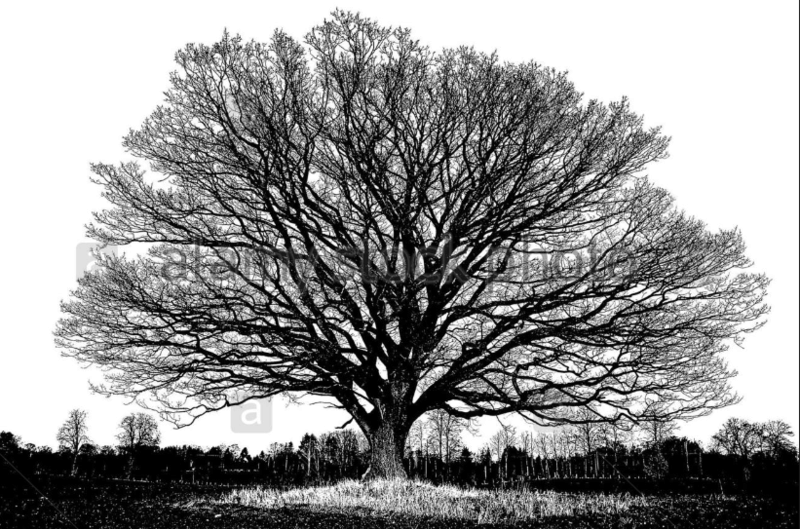Air Layered American Elm
+2
appalachianOwl
Marty Weiser
6 posters
Page 1 of 1
 Re: Air Layered American Elm
Re: Air Layered American Elm
Very nice, although I like the Sara Raynor pot a lot better!
However, it looks like it might be a bit small based upon the pictures.
However, it looks like it might be a bit small based upon the pictures.
Marty Weiser- Member
 Re: Air Layered American Elm
Re: Air Layered American Elm
Very nice tree! Really naturalistic, I like it a lot. Thanks for sharing- Jacob
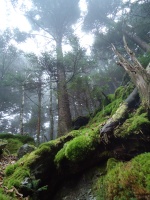
appalachianOwl- Member
 Re: Air Layered American Elm
Re: Air Layered American Elm
Very nice tree.
I agree that the current pot isn't necessarily doing it any favours (a shallower oval would be better in my humble opinion). Still, whatever pot it's in it's a great tree!
Regards
Richard
I agree that the current pot isn't necessarily doing it any favours (a shallower oval would be better in my humble opinion). Still, whatever pot it's in it's a great tree!
Regards
Richard

Richard S- Member
 Re: Air Layered American Elm
Re: Air Layered American Elm
I like your tree very much. I like it enough to toss out a couple suggestions to consider to improve it into the future. Consider my thoughts, don't act right away, if you like my ideas, great, and if you don't, I know I am looking at a series of flat photos, all showing the same side, in person I'm certain in life it looks different.
Strength of your tree it the trunk, with its developing bark, it is a nice diameter to pull off a tree look. The initial branches are a strength also, you have possibly more than you ''need'', but all are in pretty good positions. You might be able to remove a few. But before doing so, consider it carefully. Nice, few trees have this nice a start. Broom is the only ''style'' this tree can take, you have chosen good material, it has great potential.
Plan 1 - Using the distance from the trunk to the first branches, as the base unit of measure, some branches in the outer 2 segments are too thick compared to the others. The ''formula'' of the base unit from roots to first branches being the first third of the total height is not absolute, in your current tree it looks to be 4 or 5 ''units'' tall, which is fine, many broom styles do this. Keeping the tree at its current height, some of the branches 3 units and 4 units out from the trunk need to be removed and replaced with thinner branches. From your 2016 photo you should be able to see what I saw. My thought with removal, it will make the tree, look more tree like. Thick branches out at a distance from the trunk is a trait of a shrub. Visually it would help with the current tree at the current height.
Try to have no straight segments of branch longer than two thirds the length of the ''unit of measure'', the distance between the trunk and first branch. Each branch should branch or have a bend sharp enough to indicate it had branched and one branch failed, all shorter than 2/3 rds that ''base unit of measure''. Look at mature trees, most tend to do this.
Maple ''brooms'', especially silver maple do it a little different, the initial distance of trunk is short, then the trunk sub-divides into 2 sub trunks, and they will be quite a bit longer than the initial distance. Then the sub trunks will begin fairly normal formulaic dividing like most trees that naturally form a broom style.
Plan 2 - Second alternative is to get more ''formulaic'', and use the first unit, roots to first branch, as the measure of one third of the total height of the tree. You could conceivably remove a number of overly thick branches, replacing the outer third with thin, light branching. The middle third being the transition from your nice thick trunk to the fine outer twigs. This will be much more difficult to do. I actually recommend against it, unless you feel like you want to send the tree into a 5+ year re-development program. This first plan, keeping a taller design, allows you to show the tree now and keep it show able while removing, and replacing overly thick branches. This second plan, bringing the total height down, would be a serious re-design.
If you go with plan 2, it will be difficult to get the thick first branches to transition to fine twigs in the short distance with smooth taper. You will have to ''chop'' then let grow out quite long, until new is near half the thickness of previous, then chop back again to within an inch or less of the previous chop, then let grow out again. Repeat until you have natural smooth transition in the short middle third of the total planned height of the tree. As you can see, it won't be ''show worthy'' during this phase. Might even move it into a larger pot for more vigorous growth during this phase.
So plan 1 is less drastic, plan 2 could be launched into later, even years later, if you are not satisfied with plan 1, So consider plan 1, and if after a couple years, you still want to do a total redesign, you can launch into plan 2.
Hope my note gives you some thoughts to consider/. Just trying to be helpful, you have good enough of a start I thought it worth the time to suggest this.
Strength of your tree it the trunk, with its developing bark, it is a nice diameter to pull off a tree look. The initial branches are a strength also, you have possibly more than you ''need'', but all are in pretty good positions. You might be able to remove a few. But before doing so, consider it carefully. Nice, few trees have this nice a start. Broom is the only ''style'' this tree can take, you have chosen good material, it has great potential.
Plan 1 - Using the distance from the trunk to the first branches, as the base unit of measure, some branches in the outer 2 segments are too thick compared to the others. The ''formula'' of the base unit from roots to first branches being the first third of the total height is not absolute, in your current tree it looks to be 4 or 5 ''units'' tall, which is fine, many broom styles do this. Keeping the tree at its current height, some of the branches 3 units and 4 units out from the trunk need to be removed and replaced with thinner branches. From your 2016 photo you should be able to see what I saw. My thought with removal, it will make the tree, look more tree like. Thick branches out at a distance from the trunk is a trait of a shrub. Visually it would help with the current tree at the current height.
Try to have no straight segments of branch longer than two thirds the length of the ''unit of measure'', the distance between the trunk and first branch. Each branch should branch or have a bend sharp enough to indicate it had branched and one branch failed, all shorter than 2/3 rds that ''base unit of measure''. Look at mature trees, most tend to do this.
Maple ''brooms'', especially silver maple do it a little different, the initial distance of trunk is short, then the trunk sub-divides into 2 sub trunks, and they will be quite a bit longer than the initial distance. Then the sub trunks will begin fairly normal formulaic dividing like most trees that naturally form a broom style.
Plan 2 - Second alternative is to get more ''formulaic'', and use the first unit, roots to first branch, as the measure of one third of the total height of the tree. You could conceivably remove a number of overly thick branches, replacing the outer third with thin, light branching. The middle third being the transition from your nice thick trunk to the fine outer twigs. This will be much more difficult to do. I actually recommend against it, unless you feel like you want to send the tree into a 5+ year re-development program. This first plan, keeping a taller design, allows you to show the tree now and keep it show able while removing, and replacing overly thick branches. This second plan, bringing the total height down, would be a serious re-design.
If you go with plan 2, it will be difficult to get the thick first branches to transition to fine twigs in the short distance with smooth taper. You will have to ''chop'' then let grow out quite long, until new is near half the thickness of previous, then chop back again to within an inch or less of the previous chop, then let grow out again. Repeat until you have natural smooth transition in the short middle third of the total planned height of the tree. As you can see, it won't be ''show worthy'' during this phase. Might even move it into a larger pot for more vigorous growth during this phase.
So plan 1 is less drastic, plan 2 could be launched into later, even years later, if you are not satisfied with plan 1, So consider plan 1, and if after a couple years, you still want to do a total redesign, you can launch into plan 2.
Hope my note gives you some thoughts to consider/. Just trying to be helpful, you have good enough of a start I thought it worth the time to suggest this.

Leo Schordje- Member
 Re: Air Layered American Elm
Re: Air Layered American Elm
Leo - Great feedback on this tree in particular and most brooms/spreading deciduous trees in general that makes a great deal of sense. I plan to use the model you suggested for plan 1 to re-look at a couple of my trees in development this spring. While obviously not an absolute, it gives a good general guideline in how to develop a taller broom/spreading deciduous tree.
Marty Weiser- Member
 Re: Air Layered American Elm
Re: Air Layered American Elm
Leo Schordje wrote:I like your tree very much. I like it enough to toss out a couple suggestions to consider to improve it into the future. Consider my thoughts, don't act right away, if you like my ideas, great, and if you don't, I know I am looking at a series of flat photos, all showing the same side, in person I'm certain in life it looks different.
Strength of your tree it the trunk, with its developing bark, it is a nice diameter to pull off a tree look. The initial branches are a strength also, you have possibly more than you ''need'', but all are in pretty good positions. You might be able to remove a few. But before doing so, consider it carefully. Nice, few trees have this nice a start. Broom is the only ''style'' this tree can take, you have chosen good material, it has great potential.
Plan 1 - Using the distance from the trunk to the first branches, as the base unit of measure, some branches in the outer 2 segments are too thick compared to the others. The ''formula'' of the base unit from roots to first branches being the first third of the total height is not absolute, in your current tree it looks to be 4 or 5 ''units'' tall, which is fine, many broom styles do this. Keeping the tree at its current height, some of the branches 3 units and 4 units out from the trunk need to be removed and replaced with thinner branches. From your 2016 photo you should be able to see what I saw. My thought with removal, it will make the tree, look more tree like. Thick branches out at a distance from the trunk is a trait of a shrub. Visually it would help with the current tree at the current height.
Try to have no straight segments of branch longer than two thirds the length of the ''unit of measure'', the distance between the trunk and first branch. Each branch should branch or have a bend sharp enough to indicate it had branched and one branch failed, all shorter than 2/3 rds that ''base unit of measure''. Look at mature trees, most tend to do this.
Maple ''brooms'', especially silver maple do it a little different, the initial distance of trunk is short, then the trunk sub-divides into 2 sub trunks, and they will be quite a bit longer than the initial distance. Then the sub trunks will begin fairly normal formulaic dividing like most trees that naturally form a broom style.
Plan 2 - Second alternative is to get more ''formulaic'', and use the first unit, roots to first branch, as the measure of one third of the total height of the tree. You could conceivably remove a number of overly thick branches, replacing the outer third with thin, light branching. The middle third being the transition from your nice thick trunk to the fine outer twigs. This will be much more difficult to do. I actually recommend against it, unless you feel like you want to send the tree into a 5+ year re-development program. This first plan, keeping a taller design, allows you to show the tree now and keep it show able while removing, and replacing overly thick branches. This second plan, bringing the total height down, would be a serious re-design.
If you go with plan 2, it will be difficult to get the thick first branches to transition to fine twigs in the short distance with smooth taper. You will have to ''chop'' then let grow out quite long, until new is near half the thickness of previous, then chop back again to within an inch or less of the previous chop, then let grow out again. Repeat until you have natural smooth transition in the short middle third of the total planned height of the tree. As you can see, it won't be ''show worthy'' during this phase. Might even move it into a larger pot for more vigorous growth during this phase.
So plan 1 is less drastic, plan 2 could be launched into later, even years later, if you are not satisfied with plan 1, So consider plan 1, and if after a couple years, you still want to do a total redesign, you can launch into plan 2.
Hope my note gives you some thoughts to consider/. Just trying to be helpful, you have good enough of a start I thought it worth the time to suggest this.
Thank you Leo for your advice! Do you feel that the two most lower branches on both sides I should consider removing? I do feel that would make the tree look more proportional.
Dave.
DaveV.- Member
 Similar topics
Similar topics» Big ol Layer
» Air layered Juniper
» Ground layered Hornbeam updates
» Thickening a branch being air layered in the future.
» Air layered Chinese Perfume tree
» Air layered Juniper
» Ground layered Hornbeam updates
» Thickening a branch being air layered in the future.
» Air layered Chinese Perfume tree
Page 1 of 1
Permissions in this forum:
You cannot reply to topics in this forum|
|
|







